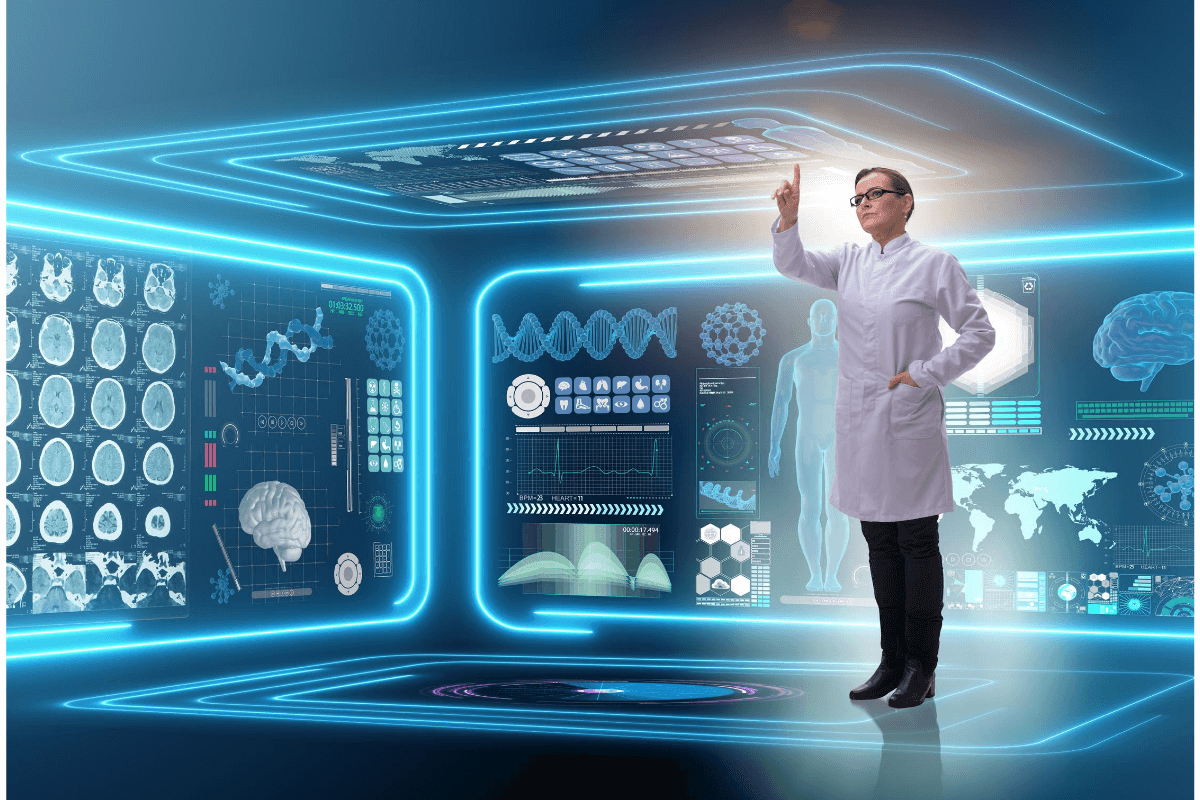Leave us a message
We usually respond within a few hours. You can also make an appointment with us for a specific date by clicking on the link to our calendar below.


Telemedicine can be defined as the use of software and electronic communication to monitor patients' state of health and treatment, instead of a personal visit.
According to IBIS World, revenues from telemedicine services have increased fivefold since 2014, from USD 0.5 billion to USD 2.5 billion in 2019. It is currently one of the fastest growing branches of IT (more than 30% per year).
Telemedicine is mainly associated (especially in a pandemic situation) with providing medical advice over the phone or via Internet communicator.
The beginnings of telemedicine are the 1950s and 1960s. Radio communication was used to treat seafarers on seagoing ships and internal television in hospitals for psychiatric consultations.
Today, remote communication between a doctor and a patient is most often used in the treatment of diabetes, cardiological diseases and respiratory problems.
Remote communication is one side of the coin. Much more interesting is the other side, i.e. the combination of high-level applications and embedded systems in devices monitoring patient's health condition. The system embedded e.g. in the device dosing the medicine transmits data to the application in the cloud, which shows the doctor the whole of the existing therapy. If we add machine learning algorithms to the high-level application...
An example of a very advanced embedded system is a product of the Israeli company TytoCare - a universal diagnostic device which can examine many organs (lungs, throat, ears, skin) and also examine the pulse and temperature.
The role of telemedicine is very important today in areas with low population density, such as Australia, central Canada and the United States, where medical care centres are often located at a long distance from patients.
Below are some interesting e-health solutions developed in recent years.
Viz.ai (2017)
An application based on machine learning algorithms, which allows to identify images of the human brain and detect anomalies. In this way, people at risk of stroke can be identified much faster. There is a shortage of neurologists in the world, and Viz makes neurological knowledge available to doctors with other specialisations. Diagnosing the risk of stroke is critical for the patient. According to specialists, in the case of a stroke, every 15 minutes decides whether the power in the legs, for example, can be restored. According to the founders of Viz, who are neurologists, only 3 in 100 patients are diagnosed on time.
Livongo Health (2014)
Livongo is a data-based science application which is intended to offer patients a strategy for combating diabetes. The company entered the New York Stock Exchange three years ago.
One of the important trends in telemedicine today is the development of applications to support fertility treatment ("fertility tech"). We have here a market of applications - monthly cycle trackers such as Glow (glowing.com) or Clue (helloclue.com). Ava is also an interesting solution. In addition to the application, it is also a band collecting data such as heart rate, temperature loss or sleep data. The founders of Ava boast that they have already helped with the birth of 10,000 children.
In the long term, telemedicine is moving towards the aggregation and analysis of large collections of medical data (including genetic data), which will allow for increasing personalisation of medical diagnostics and creation of more cost-effective medical packages dedicated to specific patients.
What is standing in the way of the development of telemedicine? This is not technology, but rather business considerations. Private healthcare providers and insurers have so far feared that people would abuse services remotely. However, the Covid -19 pandemic has forced the US Government to make services available through MediCare (a package of basic medical services provided by the state).
E-health is also a complex issue in the area of personal data and regulations concerning medical services. The collection by cloud applications of huge amounts of sensitive medical data (which can often be, for example, an extortion tool) forces the providers of telemedicine solutions to take greater care than ever of data security. This is crucial, all the more so as during the pandemic, the trend of online and cloud-based cooperation in clinical research has developed.
I would not rule out the emergence of private cloud solutions with time, as used in banks.

We usually respond within a few hours. You can also make an appointment with us for a specific date by clicking on the link to our calendar below.